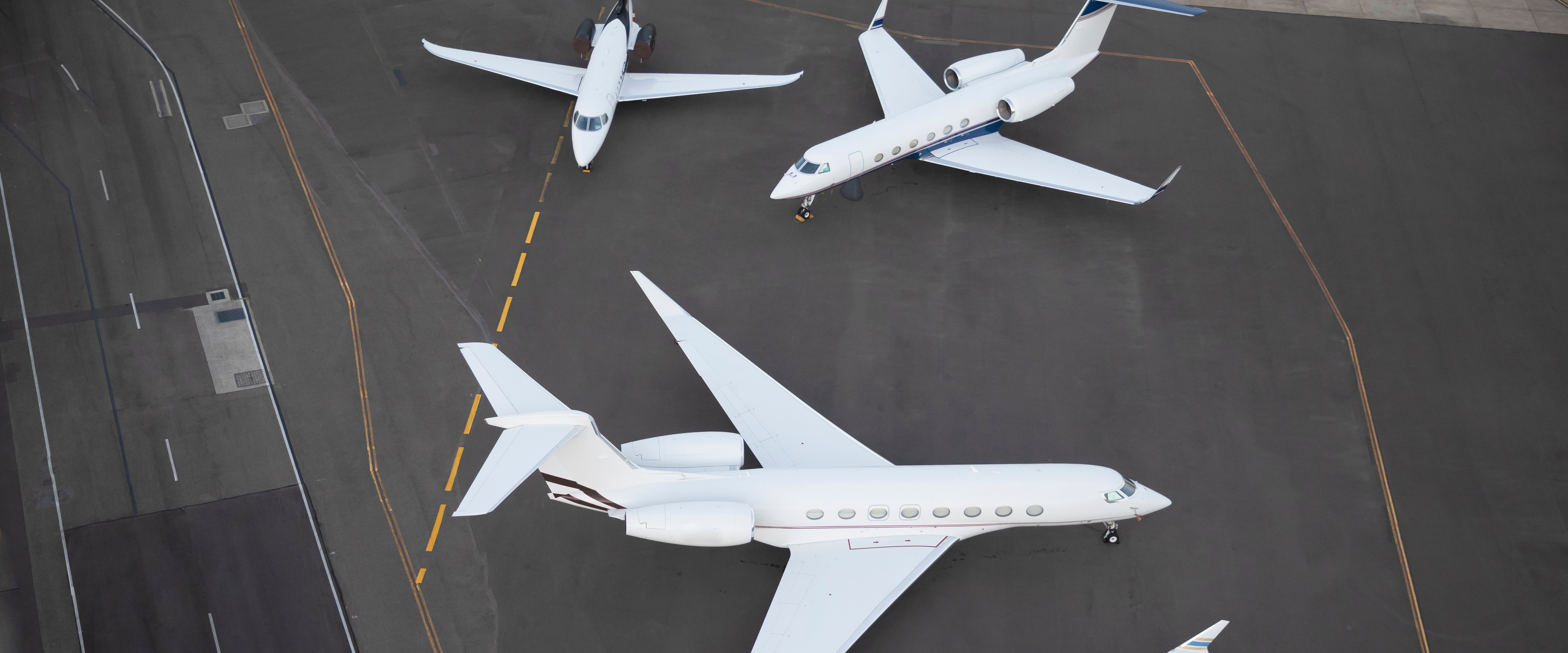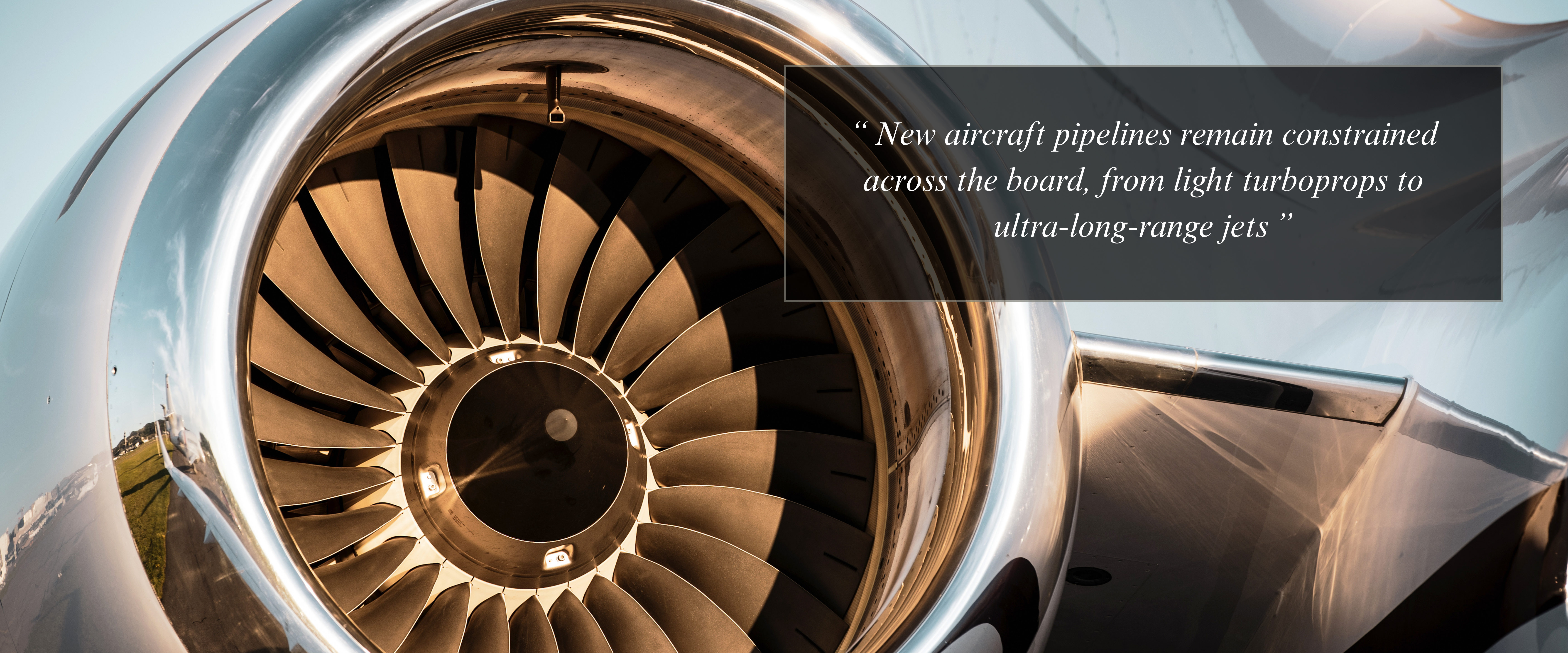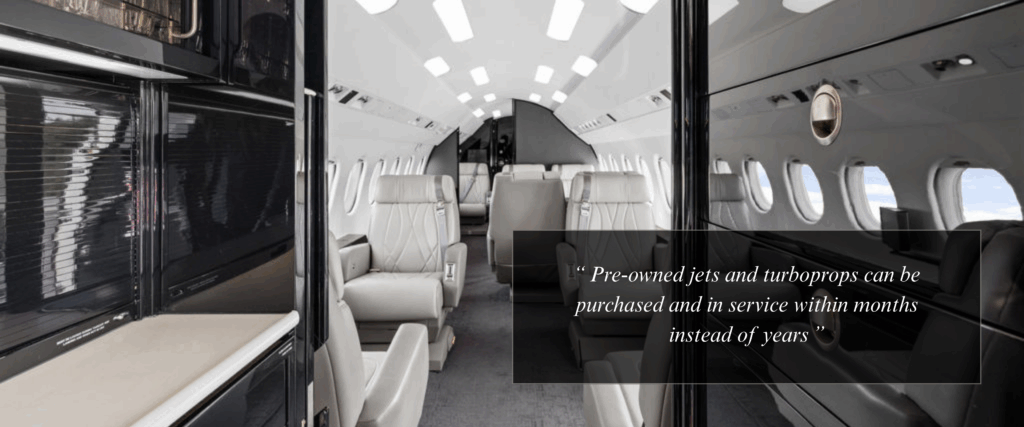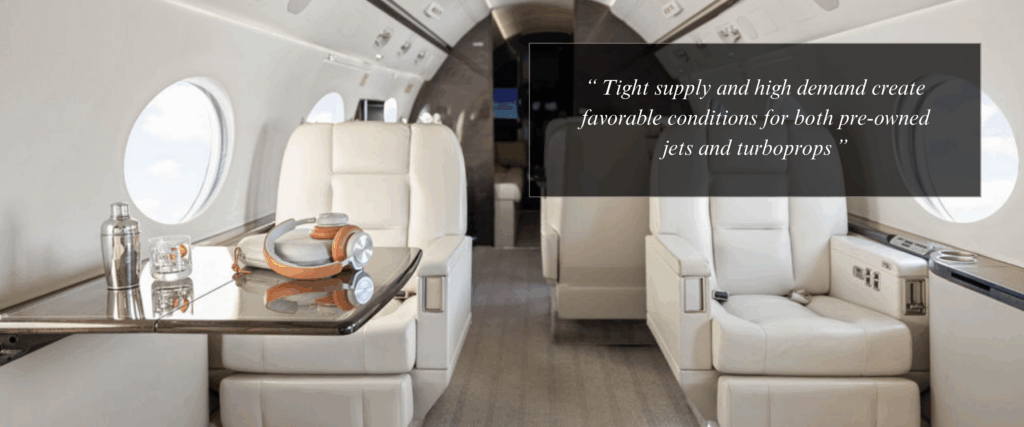The global business aviation market continues to be reshaped by historic manufacturer backlogs and persistent demand. With original equipment manufacturers (OEMs) facing delivery lead times that now extend well into 2026, buyers are increasingly turning to the pre-owned market for both business jets and turboprops to secure immediate availability and competitive value.
Industry experts say this shift is creating one of the most favorable environments in years for both buyers and sellers of pre-owned aircraft.

OEM BACKLOGS DRIVING PRE-OWNED DEMAND
New aircraft pipelines remain constrained across the board, from light turboprops to ultra-long-range jets:
- Extended delivery times: OEMs are managing record order books, with delivery slots for many popular aircraft—jets and turboprops alike—pushed out until late 2026 or beyond.
- Supply chain and labor challenges: Parts shortages and workforce limitations continue to hamper production, despite manufacturers’ best efforts to increase output.
- Persistent demand: Business aviation activity remains more than 10% above 2019 levels. Many first-time buyers who discovered private aviation during the pandemic are now long-term participants.
- Bonus depreciation: In the U.S., the reinstatement of 100% bonus depreciation has incentivized purchases of both jets and turboprops, driving further demand for available pre-owned inventory.

THE ADVANTAGES OF BUYING A PRE-OWNED JET OR TURBOPROP
For companies and individuals who need aircraft now, the pre-owned market delivers clear advantages:
- Immediate availability: Pre-owned jets and turboprops can be purchased and in service within months instead of years.
- More attractive pricing: While pricing varies by model and age, pre-owned aircraft typically offer lower acquisition costs than factory-new options.
- Proven reliability: Detailed maintenance records and operating histories provide transparency, building buyer confidence.
- Stable value retention: Aircraft that have already absorbed their steepest depreciation curve—whether a King Air turboprop or a large-cabin Gulfstream—often maintain value more predictably than new deliveries.

WHY IT’S A SELLER’S MARKET
Owners of desirable aircraft—especially younger, well-equipped models—are finding strong opportunities in today’s environment.
- Optimal timing: Tight supply and high demand create favorable conditions for both pre-owned jets and turboprops.
- Smart pricing strategies: Market-driven pricing ensures listings attract qualified buyers. Turboprops like the Beechcraft King Air 260/360 and Pilatus PC-12, for example, remain in especially strong demand.
- Condition and history matter: Buyers are seeking aircraft with complete records, documented upgrades, and strong pedigrees—factors that can significantly enhance value.
For sellers asking, “Should I sell my aircraft in 2025?”—the answer is yes. Market dynamics are highly favorable.

OUTLOOK: A ROBUST MARKET ACROSS SEGMENTS
Although inventory has risen slightly from historic lows, it remains well below pre-pandemic levels. Demand continues to absorb supply across both jets and turboprops, keeping the pre-owned business aircraft market strong through 2025.
Success in this dynamic environment depends on:
- Understanding current market trends
- Structuring transactions strategically
- Leveraging the expertise of an experienced aircraft broker

HOLSTEIN AVIATION’S PERSPECTIVE
At Holstein Aviation, we help clients buy and sell both business jets and turboprops with precision, speed, and maximum value. Whether you are seeking immediate entry into private aviation or evaluating the optimal time to sell, our team provides the market insight and transaction expertise needed to succeed in 2025’s evolving environment.